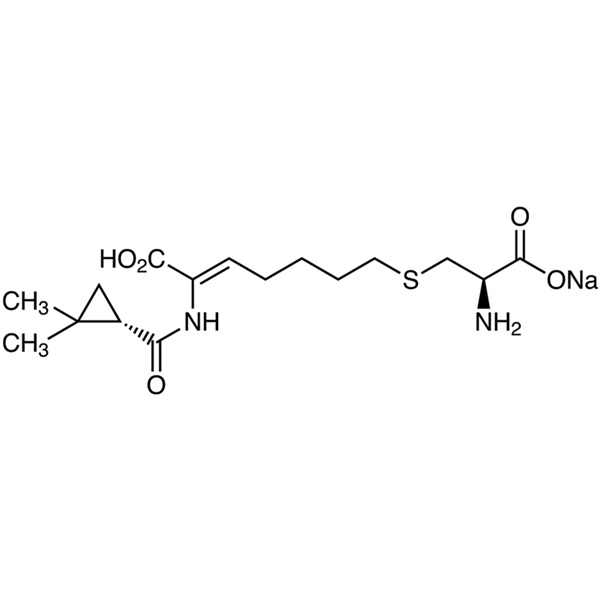Cilastatin Sodium CAS 81129-83-1 Assay 98.0~101.5%
Ruifu Chemical is the leading manufacturer of Cilastatin Sodium (CAS: 81129-83-1) with high quality. Imipenem and Cilastatin combination is used to treat a wide variety of bacterial infections in many different parts of the body.
Ruifu Chemical has been supplying pharmaceutical intermediates and APIs, fine chemicals more than 15 years.
Ruifu Chemical can provide worldwide delivery, competitive price, excellent service.
Purchase Cilastatin Sodium intermediates or other products, please contact us by e-mail: alvin@ruifuchem.com
| Chemical Name | Cilastatin Sodium |
| Synonyms | Cilastatin Sodium Salt; Cilastatin Na; Primaxin; MK0791 Sodium; Monosodium (R)-2-Amino-3-[[(Z)-6-Carboxy-6-[(S)-2,2-Dimethylcyclopropanecarboxamido]hex-5-en-1-yl]thio]propanoate; (R)-2-Amino-3-[[(Z)-6-Carboxy-6-[(S)-2,2-Dimethylcyclopropanecarboxamido]hex-5-en-1-yl]thio]propanoic Acid Monosodium Salt |
| Stock Status | In Stock, Commercial Production |
| CAS Number | 81129-83-1 |
| Cilastatin CAS | 82009-34-5 |
| Molecular Formula | C16H25N2NaO5S |
| Molecular Weight | 380.43 g/mol |
| Melting Point | >160℃(dec.) |
| Flash Point | 87℃ |
| Store Under Inert Gas | Store Under Inert Gas |
| Sensitive | Moisture Sensitive, Heat Sensitive |
| Solubility | Very Soluble in Water and in Methanol |
| Storage Temperature | Store Long-Term at 2-8℃ |
| COA & MSDS | Available |
| Origin of Product | Shanghai, China |
| Product Categories |
API (Active Pharmaceutical Ingredient) |
| Brand | Ruifu Chemical |
| Items | Specifications | Results |
| Appearance | White or Off-White Crystalline Powder | Off-White Crystalline Powder |
| Identification | By IR | Complies |
| Specific Rotation | +41.5° ~ +44.5° | +42.3° |
| pH | 6.5~7.5 | 7.1 |
| Water by Karl Fischer | <2.00% | 0.35% |
| Residue on Ignition | <0.20% | 0.08% |
| Heavy Metals (Pb) | <0.002% | <0.002% |
| Related Substances | ||
| Individual Impurity | <0.50% | Complies |
| Total Impurities | <1.00% | Complies |
| Assay / Analysis Method | 98.0~101.5% (On Dry Basis) | 101.2% |
| Conclusion | The product has been tested and complies with the given specifications | |
Package: Bottle, Aluminium foil bag, 25kg/cardboard drum, or according to customer's requirement.
Storage Condition: Keep the container tightly closed and store in a cool, dry (2~8℃), well-ventilated warehouse away from incompatible substances. Keep away from sunshine; avoid fire and heat sources; avoid moisture.
Shipping: Deliver to worldwide by air, by FedEx / DHL Express. Provide fast and reliable delivery.
Cilastatin Sodium
C16H25N2NaO5S 380.44
2-Heptenoic acid, 7-[(2-amino-2-carboxyethyl)thio]-2-[[(2,2-dimethylcyclopropyl)carbonyl]amino]-, monosodium salt, [R-[R*,S*-(Z)]]-.
Sodium (Z)-7-[[(R)-2-amino-2-carboxyethyl]thio]-2-[(S)-2,2-dimethylcyclopropanecarboxamido]-2-heptenoate [81129-83-1].
» Cilastatin Sodium contains not less than 98.0 percent and not more than 101.5 percent of C16H25N2NaO5S, calculated on the anhydrous and solvent-free basis.
Packaging and storage- Preserve in Containers for Sterile Solids as described under Injections 1, and store in a cold place.
Labeling- Where it is intended for use in preparing injectable dosage forms, the label states that it is sterile.
USP Reference standards <11>-
USP Cilastatin Ammonium Salt RS
USP Endotoxin RS
Identification-
A: The retention time of the major peak for cilastatin in the chromatogram of the Test solution, as obtained in the test for Chromatographic purity, corresponds to that in the chromatogram of a similar preparation of USP Cilastatin Ammonium Salt RS.
B: Ignite a small portion of it on a platinum wire in a nonluminous flame: an intense yellow color is imparted to the flame.
Specific Rotation <781S>: between +41.5 and +44.5, on the anhydrous and solvent-free basis.
Test solution: 10 mg per mL, in a mixture of methanol and hydrochloric acid (120:1).
Bacterial endotoxins <85>- Where the label states that Cilastatin Sodium is sterile, it contains not more than 0.17 USP Endotoxin Unit per mg of cilastatin.
Sterility <71>- Where the label states that Cilastatin Sodium is sterile, it meets the requirements when tested as directed for Membrane Filtration under Test for Sterility of the Product to be Examined, 6 g of specimen dissolved in 200 mL of Fluid A being used.
pH <791>: between 6.5 and 7.5, in a solution (1 in 100).
Water, Method I <921>: not more than 2.0%.
Heavy metals, Method II <231>: 0.002%.
Limit of solvents-
Internal standard solution- Transfer 0.5 mL of n-propyl alcohol to a 1000-mL volumetric flask, dilute with water to volume, and mix.
Standard solution- Transfer 2.0 mL of acetone, 0.50 mL of methanol, and 0.50 mL of mesityl oxide to a 1000-mL volumetric flask, dilute with water to volume, and mix. Transfer 2.0 mL of this solution and 2.0 mL of Internal standard solution to a 10-mL volumetric flask, dilute with water to volume, and mix. This solution contains 316 µg of acetone, 79 µg of methanol, and 86 µg of mesityl oxide per mL.
Test solution- Transfer about 200 mg of Cilastatin Sodium, accurately weighed, to a 10-mL volumetric flask, add 2.0 mL of Internal standard solution and about 5 mL of water, and dissolve by shaking. Dilute with water to volume, and mix.
Chromatographic system (see Chromatography <621>)-The gas chromatograph is equipped with a flame-ionization detector and a 0.53-mm × 30-m capillary column, the internal wall of which is coated with a 1.0-µm film of liquid phase G16. The column temperature is maintained at 50 for 2.5 minutes, then increased at a rate of 8 per minute to 70, and maintained at 70 for 0.5 minute; the injection port temperature is maintained at 160; the detector temperature is maintained at 250; and helium is used as the carrier gas at a flow rate of about 9 mL per minute. Chromatograph the Standard solution, and record the peak responses as directed for Procedure: the relative retention times are about 0.26 for acetone, 0.35 for methanol, 0.67 for n-propyl alcohol, and 1.0 for mesityl oxide; and the relative standard deviation for replicate injections, determined from peak area ratios of each analyte to n-propyl alcohol, is not more than 5.0%.
Procedure-Separately inject equal volumes (about 1 µL) of the Standard solution and the Test solution into the chromatograph, using the solvent (water) flush technique; record the chromatograms; and measure the areas for the acetone, methanol, n-propyl alcohol, and mesityl oxide peaks. Calculate the percentages of acetone, methanol, and mesityl oxide in the portion of Cilastatin Sodium taken by the formula:
(C/W)(RU / RS)
in which C is the concentration, in µg per mL, of the appropriate analyte in the Standard solution; W is the quantity, in mg, of Cilastatin Sodium taken to prepare the Test solution; and RU and RS are the peak area ratios of the corresponding analyte to n-propyl alcohol obtained from the Test solution and the Standard solution, respectively. Not more than 1.0% of acetone is found; not more than 0.5% of methanol is found; and not more than 0.4% of mesityl oxide is found.
Chromatographic purity-
Solvent- Use water.
Solution A- Prepare a mixture of dilute phosphoric acid (1 in 1000) and acetonitrile (700:300), pass through a filter having a 0.5-µm or finer porosity, and degas.
Solution B- Use dilute phosphoric acid (1 in 1000). Pass through a filter having a 0.5-µm or finer porosity, and degas.
Mobile phase- Use variable mixtures of Solution A and Solution B as directed for Chromatographic system. Make adjustments if necessary (see System Suitability under Chromatography <621>).
Test solution- Prepare a solution of Cilastatin Sodium in Solvent having a concentration of about 1.6 mg per mL.
Chromatographic system (see Chromatography <621>)-The liquid chromatograph is equipped with a 210-nm detector and a 4.5-mm × 25-cm column containing packing L1. The column is maintained at a constant temperature of about 50. The flow rate is about 2 mL per minute. The chromatograph is programmed as follows.
Time
(minutes) Solution A
(%) Solution B
(%) Elution
0 15 85 equilibration
0-30 15®100 85®0 linear gradientChromatograph the Test solution, and measure the peak responses as directed for Procedure: the capacity factor, k¢, is not less than 10; the column efficiency determined from the cilastatin peak is not less than 3000 theoretical plates; and the tailing factor is not more than 4.5.
Procedure- Separately inject equal volumes (about 20 µL) of the Test solution and the Solvent into the chromatograph, record the chromatograms, and measure the areas of the peaks. Calculate the chromatographic purity, in percentage, of the portion of Cilastatin Sodium taken by the formula:
100rC / (rT rB rA)
in which rC is the area of the cilastatin peak obtained from the Test solution; rT is the sum of the areas of all the peaks obtained from the Test solution; rB is the sum of the areas of all the peaks obtained from the Solvent; and rA is the response of the peak, if any, of nonretained substances, such as acetone, at the solvent front obtained from the Test solution: not less than 98.5% is found. Calculate the percentage of each impurity in the portion of Cilastatin Sodium taken by the formula:
100ri / (rT rB rA)
in which ri is the peak area for each impurity in the chromatogram obtained from the Test solution and the other terms are as defined above: not more than 0.5% of any individual impurity is found.
Assay- Transfer about 300 mg of Cilastatin Sodium, accurately weighed, to a suitable beaker, add 30 mL of methanol, and dissolve by swirling. Add 5 mL of water, and titrate potentiometrically with 0.1 N hydrochloric acid to a pH of about 3. Then titrate with 0.1 N sodium hydroxide until three inflection points have been observed. Calculate the titer difference, in mL, between the first and third inflection points. Each mL of 0.1 N sodium hydroxide is equivalent to 19.022 mg of C16H25N2NaO5S.
How to Purchase? Please contact Dr. Alvin Huang: sales@ruifuchem.com or alvin@ruifuchem.com
15 Years Experience? We have more than 15 years of experience in the manufacture and export of a wide range of high quality pharmaceutical intermediates or fine chemicals.
Main Markets? Sell to domestic market, North America, Europe, India, Korea, Japanese, Australia, etc.
Advantages? Superior quality, affordable price, professional services and technical support, fast delivery.
Quality Assurance? Strict quality control system. Professional equipment for analysis include NMR, LC-MS, GC, HPLC, ICP-MS, UV, IR, OR, K.F, ROI, LOD, MP, Clarity, Solubility, Microbial limit test, etc.
Samples? Most products provide free samples for quality evaluation, shipping cost should be paid by customers.
Factory Audit? Factory audit welcome. Please make an appointment in advance.
MOQ? No MOQ. Small order is acceptable.
Delivery Time? If within stock, three days delivery guaranteed.
Transportation? By Express (FedEx, DHL), by Air, by Sea.
Documents? After sales service: COA, MOA, ROS, MSDS, etc. can be provided.
Custom Synthesis? Can provide custom synthesis services to best fit your research needs.
Payment Terms? Proforma invoice will be sent first after confirmation of order, enclosed our bank information. Payment by T/T (Telex Transfer), PayPal, Western Union, etc.
| RTECS | MJ9650200 |
| HS Code | 2941 9090.99 |
Cilastatin Sodium (CAS: 81129-83-1) is a chemical compound widely used in scientific research. It acts as an inhibitor of renal dehydropeptidase, enhancing the efficacy of antibiotics like imipenem. Its application in studies focuses on understanding drug metabolism and improving therapeutic outcomes.
Imipenem and Cilastatin Injection, this medication is used to treat a wide variety of bacterial infections in many different parts of the body. This medication is known as a carbapenem-type antibiotic. It works by killing bacteria or preventing their growth. This medicine will not work for colds, flu, or other virus infections. It is sometimes given with other antibiotics.
Imipenem and Cilastatin Injection is used to treat certain serious infections that are caused by bacteria, including endocarditis (infection of the heart lining and valves) and respiratory tract (including pneumonia), urinary tract, abdominal (stomach area), gynecological, blood, skin, bone, and joint infections. Imipenem is in a class of medications called carbapenem antibiotics. It works by killing bacteria. Cilastatin is in a class of medications called dehydropeptidase inhibitors. It works by helping imipenem stay active in your body for a longer period of time.
-
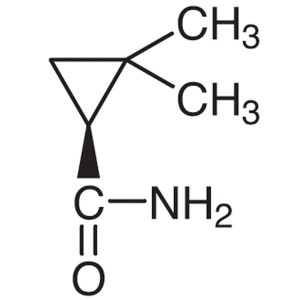
(S)-(+)-2,2-Dimethylcyclopropanecarboxamide CAS...
-
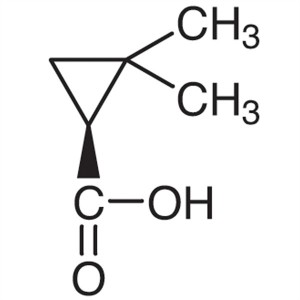
(S)-(+)-2,2-Dimethylcyclopropanecarboxylic Acid...
-
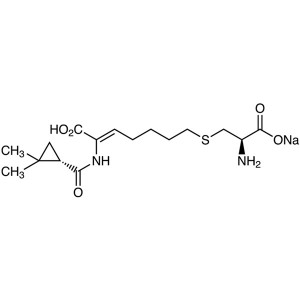
Cilastatin Sodium CAS 81129-83-1 Assay 98.0~101.5%
-
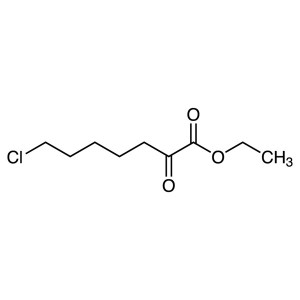
Ethyl 7-Chloro-2-Oxoheptanoate CAS 78834-75-0 P...
-
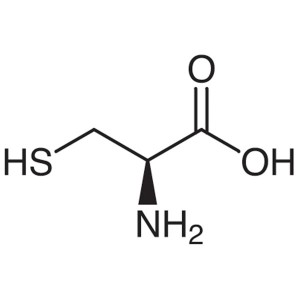
L-Cysteine CAS 52-90-4 (H-Cys-OH) Assay 98.5~10...
-
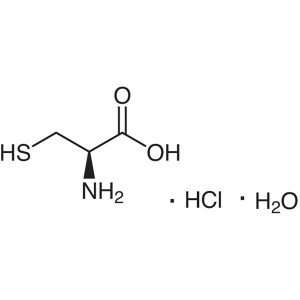
L-Cysteine Hydrochloride Monohydrate CAS 7048-0...

